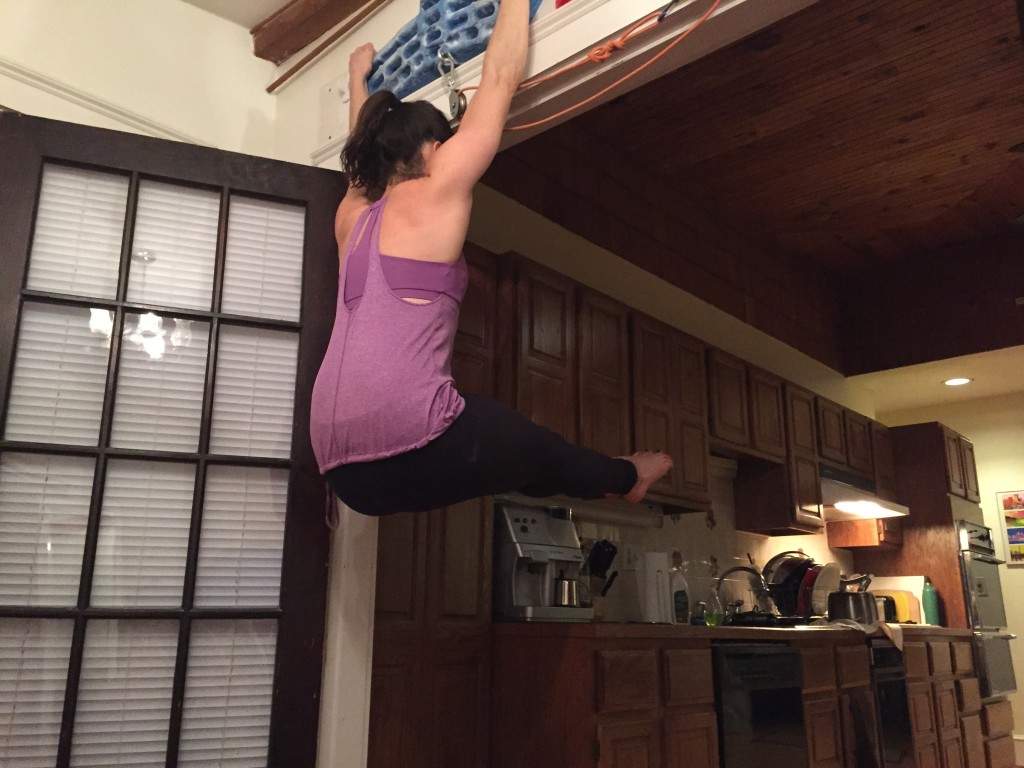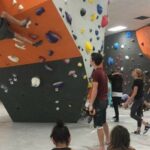No Excuses: Training From Home: It’s the middle of winter and while you might be dreaming about sending your proj this summer, you’re full of excuses when it comes down to training for your summer of sending. “It’s so hard to get to the gym after work.”

No excuses! Grab that pan and get started training (forearm hypertrophy) now!
“There’s a driving ban because of the snow.” “If only I had a home wall…” Ya, ya, ya, we’ve heard and said it all ourselves. For today’s training post, we share 10 ways you can get fit for climbing, without even leaving your house. We’ve kept these exercises minimalist, the first five require a hangboard and the second five require only yourself.


Training From Home
We are sharing the best tips so you can get start it from your home, no gym or outdoor yet, you can start it today. Also, don’t forget to red out our story of falling into fear again.
1. Pull Up Pyramid
Nothing gets you in shape for climbing like a good old-fashioned pull-up. Here’s a twist on doing pull-ups to push yourself to your max. Start on your hang board with your right hand higher than your left, both on jugs. Do one pull up. Switch so that your left is higher than your right and do one pull up. Wait two minutes and repeat doing two pull-ups on each side. Continue adding pull-ups up each round until you are unable to do a full pull-up. Complete that pull-up set on each arm.
Then go back down the pyramid. At the end of the day, climbing comes down to being able to “pull up”. Nothing translates more directly. These uneven pull-ups will also help with your lock-off strength.
2. Type Writers
On your hangboard, spread your hand’s shoulder-width apart on jugs and pull up to the top of your pull-up position. Shift your body weight horizontally, from right arm to left arm while trying to maintain your same vertical position. Be Climbing does an excellent job of modeling these. These are great for building up your one-arm lock-off strength. You can also check them out in Galina’s “Training for Climbing” video.
3. (Building up to) Front & Back Levers
Don’t get freaked out and cross these off as impossible too quickly. There are great ways to build up to doing a front/back lever that will also build up climbing strength. These will directly translate to keeping your body in tight on the wall when it’s steep and allow you to pull your body in and straighten up when you need to make a long reach. Breaking Muscle does a nice job of modeling and breaking down the front lever and back lever step by step.

Lock-offs on the hangboard are another great exercise.
4. Lock-Offs
The application of these is obvious. To do, pull up all the way on your hangboard so that your arms are at 45 degrees and hold for 5 seconds, then lower (without letting your feet touch) and pull back up to 90 degrees and hold. Lower and pull back up to 120 degrees and hold before lowering all the way down. We’ve shared Galina Parfenov’s training video before, but she does a fantastic job of modeling how to do a lock-off (and climbing training in general); fast forward to 2:28 to see lock-offs.
5. Hangboard Workout
The renowned climber, Jerry Moffat said, “Your fingers can never be strong enough.” Put that hangboard to use and actually follow through on a hangboard routine. Personally, this is where I have seen the quickest gains and direct application to my climbing. There are numerous hangboard finger workouts out there. We recommend the Anderson brothers’ Guide to Hangboard Training which has great recommendations for beginner hangboard workouts.
6. Pistol Squats
In climbing we tend to focus a ton on our upper body and forget about our lower body. Yet, so much of being able to climb strong requires strong legs and core. Pistol squats are excellent for developing the muscles you need to power off of your legs in climbing. To do a pistol squat, squat down on your right leg while holding your left leg straight out in front of you and then stand back up on your right leg; then switch legs. It sounds easier than it is – and I’ll be honest and let you know I’m still working up to being able to do one.
I started by trying to stand up from a milk crate on one leg with my other leg extended out and am still working toward a full pistol squat. I typically do 3 sets of 6 reps. Breaking Muscle has a great breakdown of how to do a pistol squat.
7. Plange Push-ups
That’s right, good old push-ups (with a shoulder protraction at the top). So much of climbing is pulling, that we can often neglect our other muscles leading to a huge muscular imbalance. Do a push-up, focusing on keeping your back flat through the motion. At the top of each push-up, curve or make a hump in your back, protracting from the middle of your upper back. Aim for 15-25, or 3 sets of 6.
8. Hand-stand push-ups
This is another variation of the push-up to prevent muscular imbalance as well as develop shoulder strength. If you’re uneasy being upside down, start by getting comfortable doing a headstand against a wall and build up to this. To do: Kick into a handstand against a wall so that your stomach is facing out and your feet are pressed against the wall. (You may want to have someone spot your for this until you get comfortable).
One you are able to hold a handstand for 15 seconds, put a pillow between your hands and SLOWLY lower your head down. Kick out of the position to the floor and repeat. As you gain strength and comfort, you can work on pushing up or stopping at different points as you lower down to the pillow. Gymnastics WOD has some good tips and video on this.
9. Forearm Hypertrophy
The one place climbers are not afraid to bulk up is their forearms, yet this is a difficult area to target. One simple way to develop your forearms is to grab a sledgehammer or pan and rotate it along a variety of axes. Radial deviations involve holding hammer/pan with your arm hanging down and the hammer/pan pointing forward (thumb on top). Rotate the top of your hand (thumb side) upward such that the hammer/pan is lifted toward your radius.
Ulnar deviations are the same idea but with the hammer/pan pointing backwards (out from your pinkie finger/the blade of your hand). Rotate the weight up towards your ulna. Another variation is to hold your hand out in front of you with your elbow at your side, bent at 90 degrees. Hold the hammer/pan in your fist such that the weight sticks up vertically. Slowly rotate it to horizontal on the right, then back up and to horizontal on the left. Aim for 5 sets of 8-ish reps for each of these exercises. Climb Strong also has some great suggestions for forearm hypertrophy.

Leg lifts on your hangboard are an excellent core workout
10. Abs
You knew they were coming. A strong core is essential to climbing! And lucky for you, we’ve got an entire post on 20 minutes to a stronger core.
Just a note that I hope is obvious – don’t do these all in one day, but definitely integrate into your weekly training, and you should start seeing results.
Climb (and train) on! ~Cate






